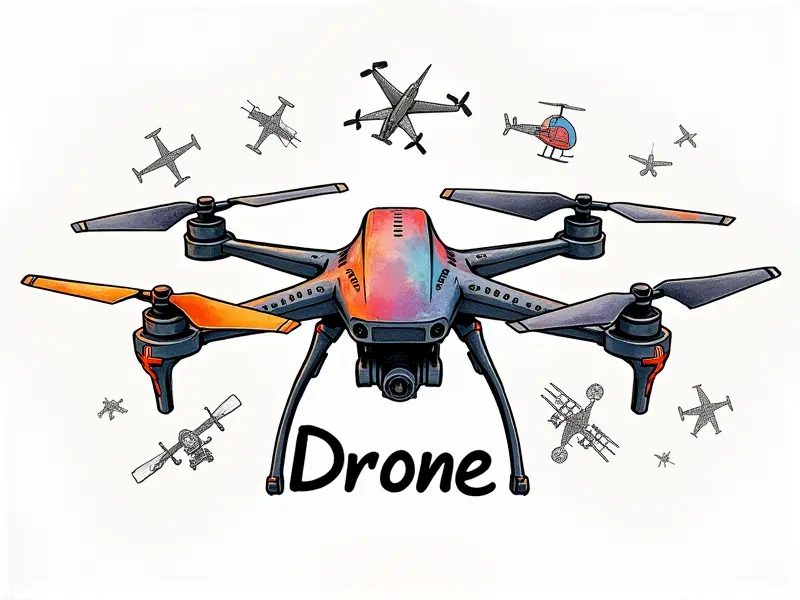Battery types explained

Lithium-Polymer Batteries Unveiled
When it comes to powering high-performance devices such as RC drones and electric vehicles (EVs), Lithium-Polymer (LiPo) batteries are a top choice. Known for their lightweight, compact size, and high energy density, LiPo batteries offer superior performance compared to traditional battery types like Nickel-Cadmium (NiCd) or Nickel-Metal-Hydride (NiMH). With advancements in technology, LiPo batteries continue to evolve, providing enhanced capacity, longer cycle life, and improved safety features.
LiPo vs NiMH: The Battle Explained
The debate between Lithium-Polymer (LiPo) and Nickel-Metal-Hydride (NiMH) batteries is a common one in the RC community. While both types have their advantages, LiPo batteries generally offer higher voltage per cell, greater energy density, and lighter weight compared to NiMH counterparts. However, NiMH batteries are known for their robustness, lower cost, and consistent performance over time.
- LiPo Batteries: High voltage, lightweight, high capacity
- NiMH Batteries: Robust construction, low cost, reliable discharge characteristics
Understanding LiPo Batteries for RC Drones
Lithium-Polymer (LiPo) batteries are the go-to choice for powering RC drones due to their high power output and energy density. These batteries provide a significant boost in flight time, allowing pilots to enjoy longer aerial adventures without needing frequent recharges.
Key Features of LiPo Batteries
- Voltage Rating: A single cell provides 3.7V, making it easy to achieve higher voltages by connecting cells in series (S).
- Ah Capacity: Measures the total energy storage capacity of a battery; higher Ah ratings mean longer flight times.
Maximize Flight Time with LiPo
To get the most out of your Lithium-Polymer (LiPo) batteries, it's crucial to understand how to optimize their performance. Proper charging techniques and maintenance practices can significantly extend battery life and ensure peak efficiency.
- Charging: Use a balance charger to maintain uniform charge levels across all cells.
- Maintenance: Store batteries at 3.8V per cell when not in use to prevent degradation.
Battery Life Comparison Guide
When choosing between different battery types, it's important to consider factors such as discharge rate, capacity, and longevity. Lithium-Polymer (LiPo) batteries typically outperform Nickel-Metal-Hydride (NiMH) in terms of energy density and weight-to-power ratio.
Battery Life Expectancy
- LiPo Batteries: Can last 200-500 charge cycles, depending on usage and maintenance.
- NiMH Batteries: Typically endure around 500-1000 charge cycles before capacity drops significantly.
Essential Battery Tips for FPV
Flying a First-Person View (FPV) drone requires careful consideration of battery selection and management to ensure optimal performance. Here are some key tips:
- Select High-Capacity Batteries: Opt for batteries with higher capacity ratings to extend flight time.
- Battery Monitoring: Use a voltage checker or monitor during flights to prevent over-discharge.
Quick Guide to RC Airplane Batteries
Selecting the right battery for your RC airplane is crucial for performance and safety. Here’s what you need to know:
- Voltage Requirements: Ensure that the voltage of the chosen battery matches or exceeds the motor requirements.
- Ah Capacity: Higher capacity batteries provide longer flight times but may add weight.
Choosing the Perfect Battery for Your Drone
The right battery can make all the difference in your RC drone's performance. Consider the following factors when selecting a LiPo battery:
- Duty Cycle: Determine how often you will be flying and choose batteries that match your usage pattern.
- Propeller Size & Motor Type: Ensure compatibility with your drone’s motor specifications.
Safety Tips for LiPo Battery Use
Lithium-Polymer (LiPo) batteries require careful handling to prevent accidents and ensure longevity. Follow these safety guidelines:
- Proper Storage: Store batteries in a cool, dry place away from flammable materials.
- Avoid Overcharging: Use balanced chargers to avoid over-voltage conditions that can lead to thermal runaway.
Understanding Lipo Battery Ratings
Lithium-Polymer (LiPo) batteries are rated by various parameters such as capacity, voltage, and discharge rate. Here’s a breakdown:
- Ah Capacity: Represents the total energy storage of the battery.
- C Rating: Indicates the maximum continuous discharge current; higher C ratings allow for more powerful motors.
Exploring RC Drone Battery Options
The market offers a variety of LiPo batteries designed specifically for RC drones. Consider these options based on your needs:
- High-Capacity Batteries: Ideal for long-duration flights.
- High-Discharge Rate Batteries: Suitable for high-performance, fast-moving drones.
Conclusion
In conclusion, Lithium-Polymer (LiPo) batteries are the preferred choice for RC enthusiasts due to their superior performance and efficiency. By understanding the nuances of LiPo batteries and adhering to best practices, you can maximize your drone's flight time and ensure safety during operation.

